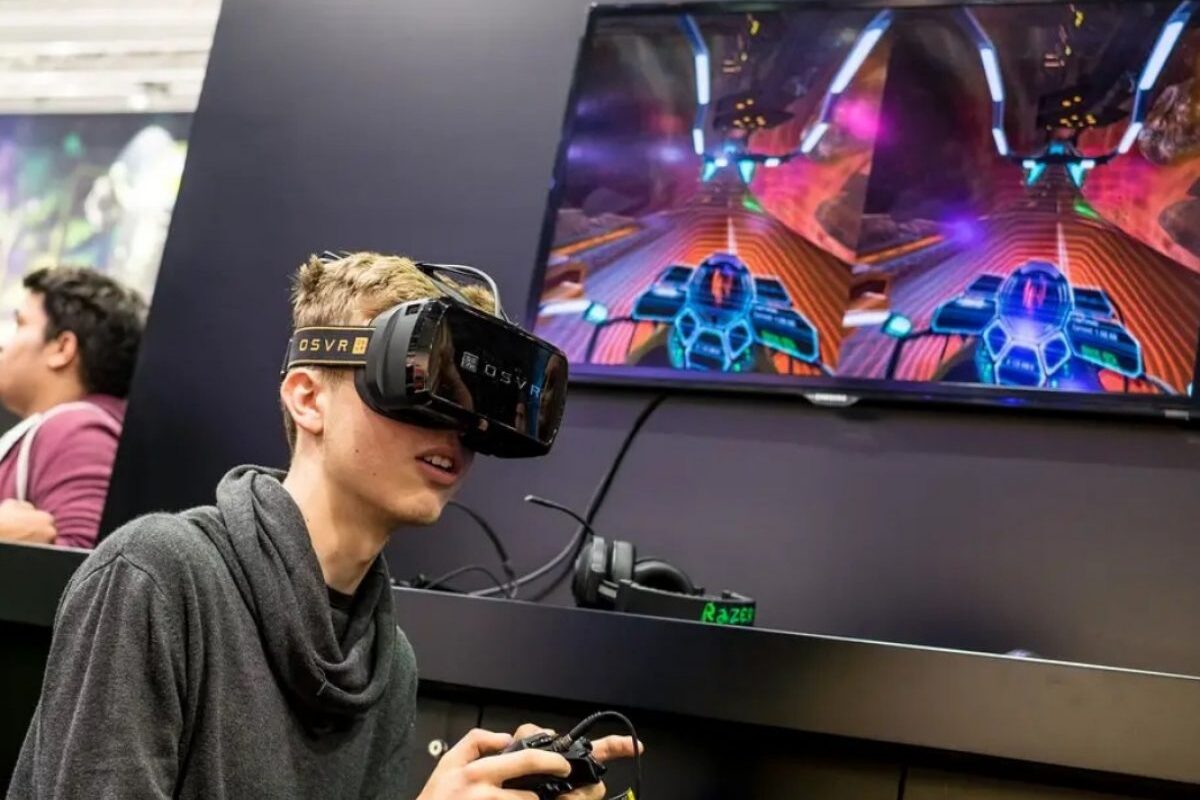The Dawn of a New Era in Gaming
With the introduction and rapid advancement of virtual reality technologies over the past decade, the gaming industry seems poised on the brink of a revolutionary new era. What was once confined to the walls of arcades and living rooms is breaking free of its traditional limitations and allowing gamers to fully immerse themselves in vivid, interactive digital worlds like never before. Major gaming console and PC manufacturers have entered the VR space, alongside dedicated hardware companies, offering consumers high-quality and increasingly affordable headset options that bring games to life all around the user.
A Pioneer in Consumer VR: Oculus Rift
One of the key players that helped spark this current wave of consumer VR adoption was Oculus VR. Founded in 2012, the startup quickly gained popularity thanks to a successful Kickstarter campaign for their prototype Oculus Rift headset. This brought VR to the forefront of the public consciousness and attracted massive investment from Facebook, who acquired Oculus for $2 billion in 2014. Since then, Oculus has launched several iterations of their Rift headset, delivering more powerful and refined VR experiences straight to the homes of early adopters. Their catalog of exclusive games and support from developers has supported VR’s growth from niche curiosity into a legitimately new gaming platform.
Expanding the: PlayStation VR & HTC Vive
However, it took the mainstream validation from major console and PC makers to truly expand the consumer VR outside of dedicated early adopters. In 2016, Sony launched their PlayStation VR system, designed specifically for their PlayStation 4 console userbase. By leveraging the already massive PlayStation install base, PSVR found great success reaching over 5 million units sold. Around the same time, HTC partnered with Valve to release the high-end HTC Vive headset and tracking system focused initially on room-scale VR experiences on PC. Together, these headsets helped further lower the barriers of VR adoption and increased interest from third-party game developers across.
The Rise of Mobile VR: Oculus Quest & Beyond
More recently, Virtual Reality in Gaming has seen another pioneering phase emerge focused squarely on untethered and all-in-one headsets for mobile use. Facebook’s Oculus Quest, released in 2019, was a major breakthrough as the first mass consumer device to not require any external computers, sensors, or wires to power full 6DOF VR. Its all-in-one, standalone design has resonated tremendously with users. With Qualcomm’s powerful yet affordable mobile VR chipsets now powering headsets, many firms beyond Oculus like HTC, Pico and others are competing in this new untethered mobile VR space as well. As prices continue falling and capabilities rise, mobile VR promises to bring immersive virtual worlds to an even broader worldwide audience over the next few years.
New Horizons in VR Gaming
As the technologies and user base have expanded, so too have the creative horizons of VR game development. Early adopters saw basic tech demos and experiments in movement and interaction. Today, sophisticated AAA gaming experiences designed from the ground up for VR are releasing across platforms. From borderline documentary space simulations like Apollo 11 VR and ISS experience to robust fantasy RPGs like Lone Echo and combat classics like Onward and Pavlov VR, the gaming genres tackled in VR are vast. Multiplayer social spaces and shared virtual worlds also herald the new era of virtual togetherness that VR enables beyond traditional game screens. The future potential seems unlimited as studios increasingly dedicate resources to this thriving new medium.
Room-Scale Revolution
Perhaps some of the most innovative and compelling early Virtual Reality in Gaming is utilized room-scale tracking, an advancement that allowed players to walk around within a defined physical space while their movements were represented virtually. Titles like Job Simulator and Beat Saber became viral sensations thanks to how physically engaging they were in even a small roomspace. As headsets progressed to larger and more accurate room tracking volumes over time, so too did the ambitious scale of these fully interactive room-scale titles. From horror survival in Face Your Fears to workout wonders like BoxVR to collaborative flight in Windlands 2, the room-scale revolution opened up whole new design possibilities that have yet to be fully tapped.
VR and Simulation
Beyond pure entertainment, Virtual Reality in Gaming is also demonstrating tremendous potential for positive change through immersive simulation and training applications across many industries. From teaching surgery techniques and public speaking skills to providing refugees with virtual recreations of their home countries and lessons in crossing borders safely, VR offers unprecedented abilities to experience roles, places and scenarios in fully interactive digital form. On the entertainment side, ride films that place viewers inside animated attractions or alongside movie scenes in VR are also illustrating how vivid experiences of places real or fictional can be virtually recreated. Going forward, this marriage of VR and simulation will likely reshape countless fields while delivering memorable experiences.
The Social Frontier Awaits
Currently some of the most anticipated developments on the VR horizon involve true social presence and interaction. Experiencing shared virtual worlds with others regardless of physical location has long been a futuristic concept, but current headsets are bringing this metaverse-like vision closer to reality through platforms like VRChat, Rec Room, AltspaceVR and others. Here, users can interact through avatars, play games, attend events and simply socialize face-to-face virtually. As the fidelity and scale of these shared worlds progresses in tandem with 5G networks and wireless capabilities, the ability to naturally communicate and collaborate over distance using our full bodies and expressions in VR will unlock entirely new categories of online connection
*Note:
1. Source: Coherent Market Insights, Public sources, Desk research
2. We have leveraged AI tools to mine information and compile it
About Author - Ravina Pandya
Ravina Pandya,a content writer, has a strong foothold in the market research industry. She specializes in writing well-researched articles from different industries, including food and beverages, information and technology, healthcare, chemicals and materials, etc. With an MBA in E-commerce, she has expertise in SEO-optimized content that resonates with industry professionals. LinkedIn Profile

 by
by 


